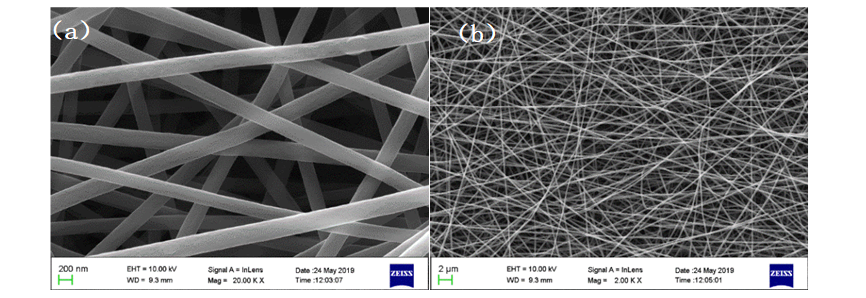Nano carbon fiber has a history of decades of research, but it has not yet achieved large-scale applications. Carbon nanofibers mainly include electrospinning carbon nanofibers and vapor-grown carbon nanofibers. The carbon nanofibers prepared by the vapor growth method are powders with a length of micrometer scale. The preparation process requires the use of catalysts, and the catalysts need to be removed during use. The process is complex and processing Film formation requires the use of binders, which is not conducive to large-scale production and application; the carbon nanofibers prepared by the electrospinning method are films composed of continuous fibers, and the process is relatively simple. However, due to the imperfect preparation process, the strength of the carbon nanofiber film is obtained Very poor, small in size, still unable to put into practical application.
The large-scale electrospinning equipment introduced by the team can realize the high-efficiency production of large-area continuous fiber membranes, and improve the subsequent preparation process, and successfully prepare a large-area continuous carbon nano-fiber membrane with higher strength, filling this technological gap in the world , Bringing nano-carbon fiber closer to industrial application.
Based on its own original technology, facing the needs of the country and the economic development of Guangdong Province, with the goal of industrial application, the team focuses on electrospinning, pre-oxidation, carbonization, graphitization and other technologies to study the large-scale production process and commercial products of carbon nanofiber membranes Development.


Carbon nanofiber membrane is prepared by electrospinning, pre-oxidation, carbonization, graphitization and other processes. It is a film composed of continuous nanofibers with a diameter of about 100~500nm. Its fiber diameter is more than ten times smaller than that of traditional carbon fiber. Significantly larger than carbon nanotubes and carbon nanofibers synthesized by gas phase method (short diameter and long length). It has the advantages of large specific surface area, high porosity, good electrical conductivity, fewer defects, and high mechanical strength. It has advantages in electrocatalysis, electromagnetic shielding, and antistatic , Electrical and thermal conductivity, electric heating and other fields have broad application prospects.
The team has introduced an electrospinning production line, has a complete set of nano-carbon fiber heat treatment equipment, and improved the production process of nano-carbon fiber membranes, which can produce large-area continuous nano-carbon fiber membranes with a width of 1 m, which fills this technological gap in the world. .
At present, the team has successfully prepared a 1200mm wide nano-carbon fiber membrane using a large-scale production electrospinning machine designed and manufactured by itself.

Optical photo of carbon nanofiber membrane (a) Plan view (b) Rewind view

Scanning electron micrograph of nano carbon fiber membrane (a) high magnification (b) low magnification
Basic performance parameters of nano carbon fiber membrane:
u Specific surface area: ~50 m2/g
u Pore size: 3-100 nm, 4nm mesopores account for a large proportion
u Thickness: 40-100 um
u Area density: ~0.8 mg/cm2
u Bulk density: ~0.16 g/cm3
u Tensile strength: ~5 MPa
u Electromagnetic shielding effectiveness: ~28 dB
u Thickness ratio efficiency: ~670 dB/mm
u Density ratio efficiency: ~38975 dB·cm2/g
u Resistivity: ~0.03 Ω·cm
u Conductivity: ~30 S/cm


Nano carbon fiber membrane flexible display
